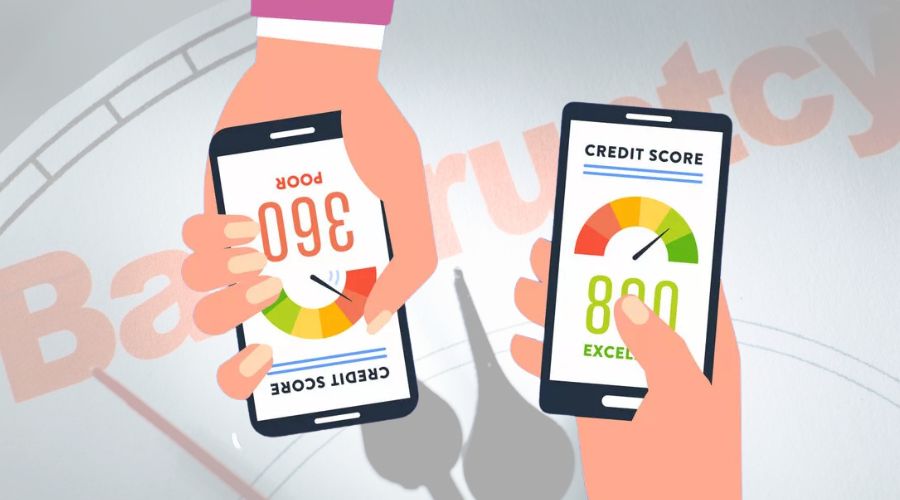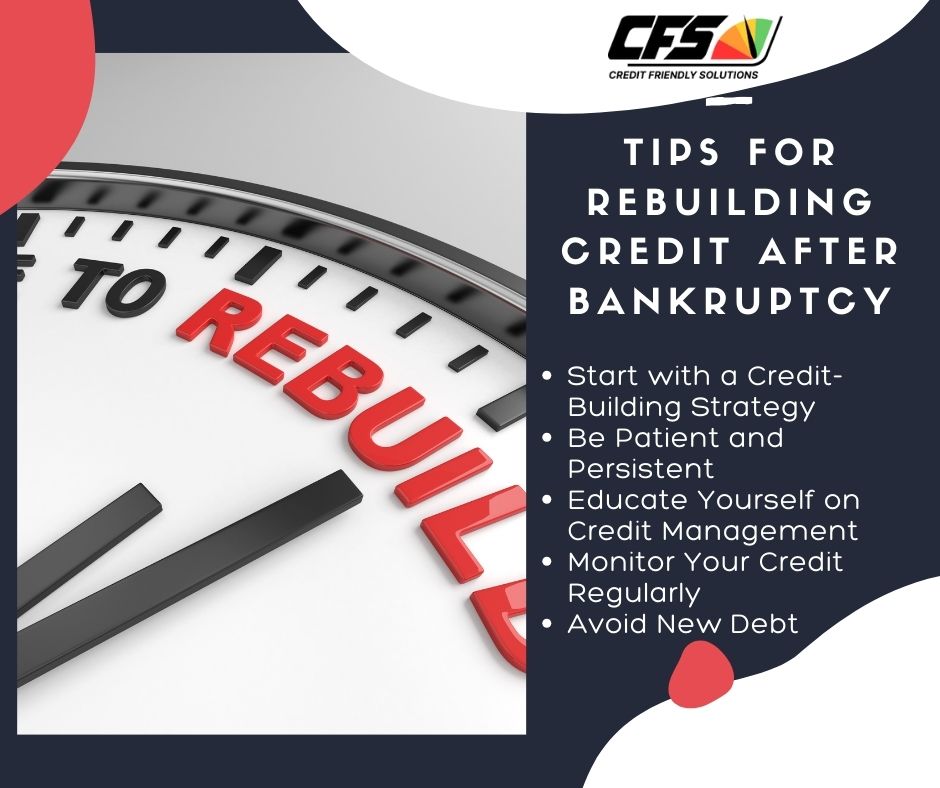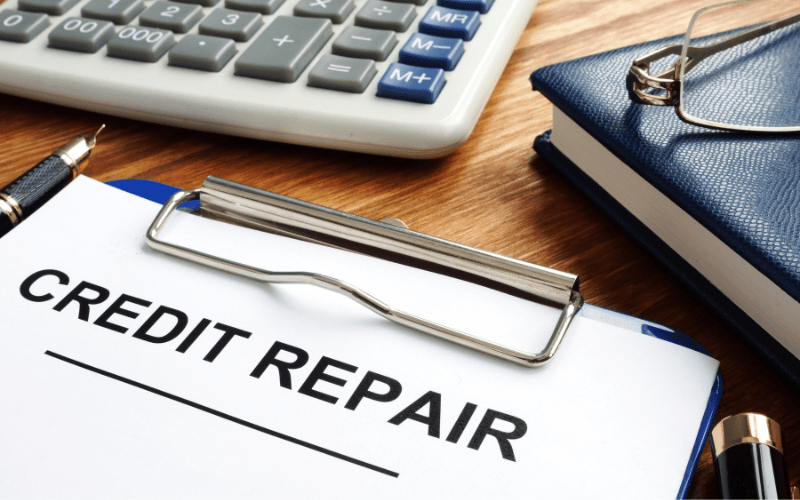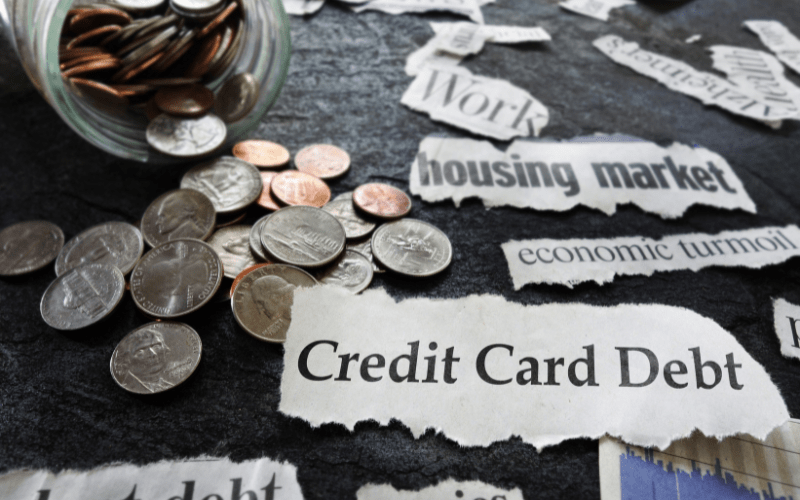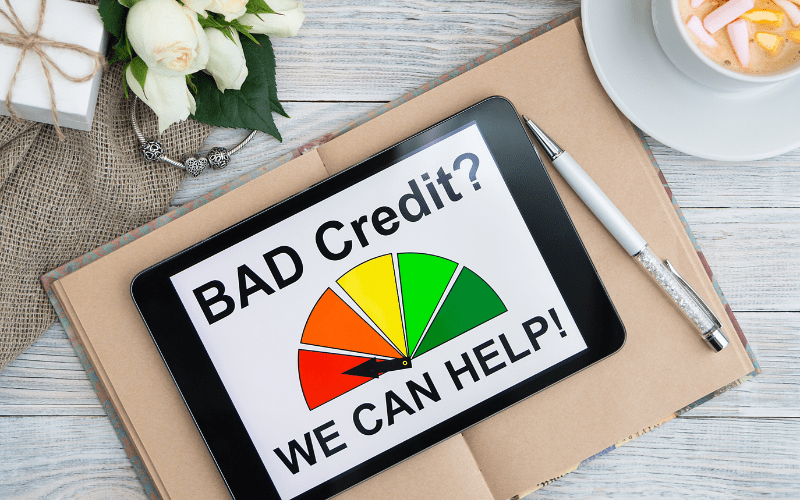Filing for bankruptcy can be a challenging and emotional process, but it’s also a fresh start for many individuals. If you’re wondering how to rebuild your credit after bankruptcy, you’re not alone. Rebuilding your credit is essential for financial health and future stability, and there are effective strategies you can use to get back on track. In this blog post, we’ll explore how to use credit card rebuilding, find the best credit cards after bankruptcy, and provide some credit solutions to help you move forward. Plus, we’ll share a free credit repair ebook to guide you through the process!
Understanding the Impact of Bankruptcy on Your Credit
Before diving into credit rebuilding strategies, it’s important to understand how bankruptcy affects your credit. Bankruptcy can significantly damage your credit score, but it also offers a chance to start anew. Your credit report will reflect the bankruptcy, and it can take time to rebuild your score. However, with the right approach, you can improve your credit over time.
The Importance of Credit Card Rebuilding
One of the most effective ways to rebuild your credit after bankruptcy is through credit card rebuilding. Credit cards can be a powerful tool for improving your credit score if used responsibly. Here’s how to use credit cards to rebuild your credit:
1. Choose the Right Credit Card
After bankruptcy, you may have limited options for credit cards, but there are still choices available. Look for credit cards after bankruptcy designed specifically for those in your situation. These cards often come with higher interest rates and lower credit limits, but they are a stepping stone to better credit options. Look for cards that report to the major credit bureaus and offer opportunities to build credit.
2. Make Timely Payments
The key to rebuilding your credit is making timely payments. Set up reminders or automate your payments to ensure you never miss a due date. Your payment history is one of the most significant factors in your credit score, so maintaining a positive payment record is crucial.
3. Keep Your Credit Utilization Low
Credit utilization, or the amount of credit you use compared to your credit limit, affects your credit score. Aim to keep your credit utilization below 30% of your total credit limit. For example, if your credit limit is $500, try to keep your balance under $150.
4. Build a Positive Credit History
Using your credit card for regular, manageable purchases and paying off the balance each month will help build a positive credit history. Over time, responsible use of credit cards will improve your credit score.
Can You Improve Your Credit Score After Bankruptcy?
Yes, you can absolutely improve your credit score after bankruptcy! While bankruptcy will have a negative impact on your credit score, it’s not a permanent barrier to achieving a great credit score. In fact, many people successfully rebuild their credit and achieve high scores after bankruptcy.
The key is to adopt positive financial habits and make strategic decisions. By following best practices for credit card rebuilding and using effective credit solutions, you can start to see improvements in your credit score. Focus on building a positive credit history and managing your finances responsibly.
Steps to Achieve a 700 Credit Score Post-Bankruptcy
Achieving a 700 credit score or higher post-bankruptcy requires dedication and consistent effort. Here are some essential steps to help you reach that goal:
1. Obtain a Copy of Your Credit Report
Start by getting a copy of your credit report from all three major credit bureaus: Equifax, Experian, and TransUnion. Review the reports for any errors or inaccuracies and dispute them if necessary.
2. Apply for a Secured Credit Card
One effective way to rebuild your credit is by using a secured credit card. Make small purchases and pay off the balance in full each month. This practice will help you build a positive payment history.
3. Open a Credit-Builder Loan
Consider opening a credit-builder loan from a bank or credit union. With this type of loan, you make regular payments that are reported to the credit bureaus, helping to improve your credit score.
4. Maintain a Low Credit Utilization Ratio
Keep your credit utilization ratio below 30%. This means using only a small portion of your available credit limit, which shows that you’re not over-relying on credit.
5. Set Up Automatic Payments
To avoid missing payments, set up automatic payments for your bills. Timely payments are crucial for rebuilding your credit score.
6. Build a Diverse Credit Mix
A diverse credit mix can positively impact your credit score. This can include a combination of credit cards, loans, and other credit accounts.
Does Bankruptcy Harm Your Credit Score?
Yes, bankruptcy does harm your credit score, but its impact is not permanent. When you file for bankruptcy, it becomes part of your credit report and can lower your credit score significantly. However, this is just the beginning of the rebuilding process.
The good news is that the negative effects of bankruptcy diminish over time as you demonstrate positive credit behavior. With consistent effort and the right strategies, such as using credit cards after bankruptcy and seeking effective credit solutions, you can start to rebuild your credit score.
Tips for Rebuilding Credit After Bankruptcy
Here are some actionable tips for rebuilding credit after bankruptcy to help you get back on track:
1. Start with a Credit-Building Strategy
Create a plan that includes obtaining a secured credit card, making timely payments, and keeping your credit utilization low. A clear strategy will guide you through the process of rebuilding your credit.
2. Be Patient and Persistent
Rebuilding your credit takes time. Be patient and stay committed to your financial goals. It’s important to understand that there are no quick fixes for credit repair.
3. Educate Yourself on Credit Management
Take advantage of resources like our free credit repair ebook to learn about credit management and repair techniques. Knowledge is a powerful tool in the credit rebuilding process.
4. Monitor Your Credit Regularly
Keep track of your credit report and score regularly to ensure that your efforts are paying off and to spot any potential issues early.
5. Avoid New Debt
While rebuilding your credit, it’s important to avoid taking on new debt. Focus on managing your existing credit responsibly.
Exploring Credit Solutions
Beyond credit card rebuilding, there are other credit solutions that can help you improve your credit after bankruptcy:
- Credit Counseling Services: Credit counseling services offer guidance on managing your finances and can help you develop a plan for rebuilding your credit. These services often provide budgeting advice, debt management plans, and educational resources.
- Secured Credit Cards: A secured credit card requires a cash deposit as collateral. This deposit acts as your credit limit and reduces the risk for the issuer. Using a secured credit card responsibly can help you rebuild your credit.
- Credit Repair Services: If you’re overwhelmed by the process, you might consider professional credit repair services. These services can help you dispute errors on your credit report and offer advice on improving your credit score.
Get Started with a Free Credit Repair Ebook
To kickstart your journey to better credit, we’re offering a free credit repair ebook! This comprehensive guide covers everything you need to know about credit repair and rebuilding your credit after bankruptcy. Download your free ebook here and take the first step towards a brighter financial future.
Exploring Credit Solutions
Beyond credit card rebuilding, there are other credit solutions that can help you improve your credit after bankruptcy:
- Credit Counseling Services: Credit counseling services offer guidance on managing your finances and can help you develop a plan for rebuilding your credit. These services often provide budgeting advice, debt management plans, and educational resources.
- Secured Credit Cards: A secured credit card requires a cash deposit as collateral. This deposit acts as your credit limit and reduces the risk for the issuer. Using a secured credit card responsibly can help you rebuild your credit.
- Credit Repair Services: If you’re overwhelmed by the process, you might consider professional credit repair services. These services can help you dispute errors on your credit report and offer advice on improving your credit score.
Get Started with a Free Credit Repair Ebook
To kickstart your journey to better credit, we’re offering a free credit repair ebook! This comprehensive guide covers everything you need to know about credit repair and rebuilding your credit after bankruptcy.
Download your free ebook here and take the first step towards a brighter financial future.
Rebuilding your credit after bankruptcy is a journey, but with the right tools and strategies, you can achieve your financial goals. By focusing on credit card rebuilding, choosing the best credit cards after bankruptcy, and exploring effective credit solutions, you can make significant progress. Don’t forget to download your free credit repair ebook to get expert advice and tips for your credit repair journey.
Contact Us
Ready to rebuild your credit and take control of your financial future? At Credit Friendly Solutions, we’re here to help you every step of the way. Our team of experts in Rocklin, CA, offers personalized advice and effective strategies to guide you through the credit rebuilding process.
Call us today at +1 (916) 680-8501 or visit us in Rocklin, CA, to schedule a consultation. Don’t just take our word for it—check out our Yelp reviews to see how we’ve helped others achieve their credit goals.


